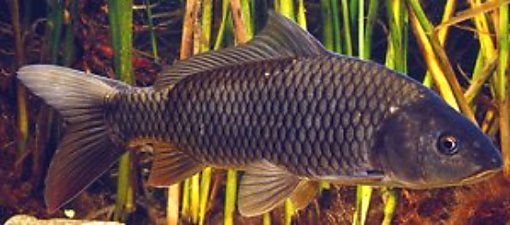Australia to Release Herpes Virus to Kill off Invasive Carp
Australia really wants to eradicate its European carp population; so much so, that it is willing to spend $11 million killing them off. How, you ask? By giving them herpes.
The country plans to clear the Murray-Darling basin of the freshwater pest by releasing a virulent strain of herpes into the waters. Federal authorities said on Sunday that the plan will be included in Tuesday’s federal budget. The goal is to wipe out 95% of the European carp population. [1]
Science Minister Christopher Pyne called the plan “carp-ageddon.” He explained how it is intended to work:
“It affects the European carp by attacking their kidneys, their skin, their gills and stopping them breathing effectively. They have the virus for a week before they show any symptoms and it suddenly kills them within 24 hours.”
The virus affects the fish’s skin and kidneys.
Agriculture and Water Resources Minister Barnaby Joyce told Fox News the carps are the “rabbits of our waterways” due to their ability to reproduce en masse.
The government won’t release the virus until 2018, as it needs time to plan for its impact. According to the Commonwealth of Scientific and Industrial Research Organization, no other species of fish are known to be effected by the strain of herpes virus. They also claim that fish that have been injected with a weakened strain of the virus have caused no reported incidents with humans who have consumed the fish.

Pyne said:
“The common carp is a nasty pest in our waterways and makes up 80% of fish biomass in the Murray Darling Basin. Anyone who loves the Murray knows what damage the carp have caused to the river environment over many years. The Invasive Animals Cooperative Research Centre and the CSIRO have made significant progress evaluating a viral biological control agent, we know that it works, we know it’s completely safe, now we need to plan the best way to roll it out.”
Joyce said the economic impact of European carp was estimated at $500 million a year, primarily in regional Australia, and especially along the Murray River.
Current control measures – trapping, commercial fishing, and exclusion – are costly and only control carp populations for short periods of time.
The carp is a considered a pest because it threatens other species by making the water thick and murky, causing erosion, and by scarfing up food and resources from native fish.
Jonathan La Nauze, program manager of the Australian Conservation Foundation, told The Guardian the funding would enable the community consultation and planning required to ensure the herpes virus was released safely and without undesirable effects on river communities. He said:
“The legacy of past mismanagement in the Murray-Darling is that 21 out of the 23 major river valleys are in poor or very poor health, according to the Sustainable Rivers Audit. Carp thrive in this kind of degraded environment – in fact they make it worse by turning over the river bed, eroding the banks and literally muddying the water. Controlling carp must go hand-in-hand with rehabilitating riverbanks, making irrigation infrastructure fish-friendly and, of course, the release of environmental flows.”

But commercial fisherman Garry Warrick fears the release of the virus could indeed have a negative impact on the environment. Speaking to the Australian Broadcasting Corporation (ABC), Warrick said:
“If the numbers of carp I know, which are around thousands of tonnes of them, if they died in quick succession, then there’s going to be that many dead fish around there won’t be enough people to clean it up. I know the fish factory that I supply, they won’t take dead carp. So I don’t know what’s going to happen to them.”
Pyne says the plan is to either turn the fish into pet food or fertilizer, “or dig enormous holes and put them in there.”
Sources:
